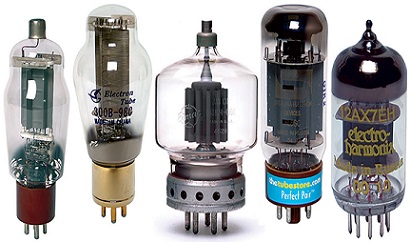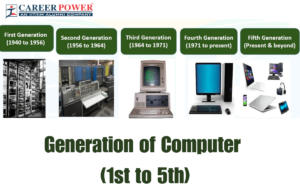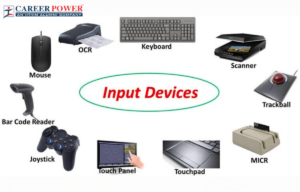Technology is changing day by day. We use a computer to complete almost each and every task. The use of computers has made our lives easy and straightforward, and businesses have also become online. Amidst all of this, have we ever wondered how these computers were invented in the very first place? The computers we use now are small, inexpensive, and very common but was it the same when it was first made? Well, no! Computers have been through a lot of evolution to take the shape of what they look like today. Here, we are discussing about the First Generation of Computers, which was spanning from the 1940s to the early 1950s, marked the dawn of electronic computing.
First Generation of Computers
The history of computers dates back to over 5000 years ago when the abacus was first invented. It was the first computing device and since then the developments of PCs got begun. The first generation of computers is known as electromechanical computers which were made using vacuum tubes.
Note: A vacuum tube is a device that helps amplify signals by controlling the movement of electrons in an evacuated space. The Vacuum Tubes were invented by Lee De Forest.
Here is a pictorial representation of Vacuum Tubes-

The first generation was the beginning of computer technology which further evolved to make computers more powerful and updated. The development of computers began in 1940 but the era of First Generation of Computers is said to be from 1946 to 1959. In that time frame, the key element employed in the progress of computers was the vacuum tube. Apart from vacuum tubes, punch cards, paper tape, and magnetic tapes served as crucial components for fulfilling input-output device and memory requirements.
Since Vacuum Tubes were much larger in size, which eventually led to large computer sizes, because of their sizes, the First Generation Computers took up a lot of space in one room, and some of them needed an entire room. Also, the electric bulbs and vacuum tubes consumed a lot of electricity which also produced a lot of heat. Installation of these vacuum tubes was also very complex and often got fused. All these factors resulted in the high prices of the First Generation of Computers and eventually only big organizations could afford them.
The First Generation of Computers totally relied upon machine languages for software needs. These languages were known as the lowest-level programming languages and were easily understood by computers. The First Generation Computers could not multitask like the ones we use today. Also, those computers solved one operation at a time, and depending upon the complexity of the operation, it took them days or even weeks to complete the task.
Features of First-Generation Computer
Now that we have studied the First Generation of Computers, let us now know some of their features. We have listed some of the essential features of these computers in this section below-
- The First Generation of Computers was built using the technology of Vacuum Tubes.
- These computers used Punch Cards as input devices.
- Magnetic Tapes were used by the First Generation of Computers as memory devices.
- The First Generation of Computers was built based on machine languages only.
- Paper Tapes were used by these computers as an output device.
Examples of First Generation of Computer
In this section, we have provided you with some examples of the First Generation of Computers for you to know them better. Some of the examples are-
Electronic Numerical Integrator and Calculator (ENIAC)
The Electronic Numerical Integrator and Calculator (ENIAC) was one of the First Generation computers invented by William Mauchly and John Eckert in 1942. This computer was designed for the US Army’s trajectory research lab to calculate artillery firing tables and to assist North American country troops throughout war II.
To build the ENIAC, 20,000 vacuum tubes were combined with around 10,000 capacitors and 70,000 resistors. This computer weighed over 30 Tonnes and required a large room to properly place it. ENIAC could do 5000 additions per second and it was a decimal instead of a binary machine. Therefore, numbers were pictured in decimal kind, and arithmetic was performed within the decimal numeration system.
Universal Automatic Computer (UNIVAC)
The Universal Automatic Computer (UNIVAC) was the world’s 1st commercially electronic computing device. This was one of the First Generation Computers and was invented by Eckert and Mauchly in 1947. This computer was then delivered to the North American country Bureau of Census in 1951.
Some of the other examples of First Generation of Computers are-
- EDVAC
- EDSAC
- IBM-701
- IBM-650
- Manchester Mark 1, Mark 2, Mark 3, etc.
Electronic Discrete Variable Automatic Computer (EDVAC)
Built by the Moore School of Electrical Engineering, Pennsylvania, the Electronic Discrete Variable Automatic Computer (EDVAC) was among the first steps taken by the world toward the computer revolution. The EDVAC was among the very first devices listed in the first generation of computers.
Some of the engineers termed EDVAC as the second or upgraded version of ENIAC as unlike ENIAC which worked on decimal form, EDVAC was a binary device and was capable of storing computer programs. The EDVAC was a first-generation binary computer with automatic addition, subtraction, multiplication, and division options with an ultrasonic serial memory.
Advantages of First Generation Computer
The First Generation of Computers was the first of its kind and made the work of people easier. Some of the major advantages of the First Generation of Computers are-
- These computers were built using vacuum tube technology, the only electronic components available in those days.
- The First Generation Computers were fast and could calculate data in milliseconds.
- The use of machine languages made these computers work relatively faster.
- The First Generation Computers have tactile sensitivity preserved.
- These computers were color-coded for easier and faster identification of readings.
- The advent of electronic computers was made possible due to Vacuum technology.
Disadvantages of First Generation Computer
Since every coin has two faces, some things have their limitations too. Some of the major disadvantages of the First Generation of Computers are listed below-
- The First Generation Computers were very large hence causing storage problems.
- They consumed a lot of electricity and also got heated shortly because of thousands of vacuum tubes.
- The First Generation Computers were not very reliable. Vacuum tubes were delicate and prone to failure, leading to frequent breakdowns and errors. Troubleshooting and fixing these errors was a significant challenge.
- These computers were not very transportable. These computers were enormous, often taking up entire rooms due to massive size and weight.
- These computers had very less work potency and costly business production.
- They also had limited programming capabilities and accessing data from these slow storage devices was also time-consuming.



 Generation of Computers 1st, 2nd, 3rd, 4...
Generation of Computers 1st, 2nd, 3rd, 4...
 Input Devices of Computer: Definition, F...
Input Devices of Computer: Definition, F...
 Computer Languages and it's Types
Computer Languages and it's Types













